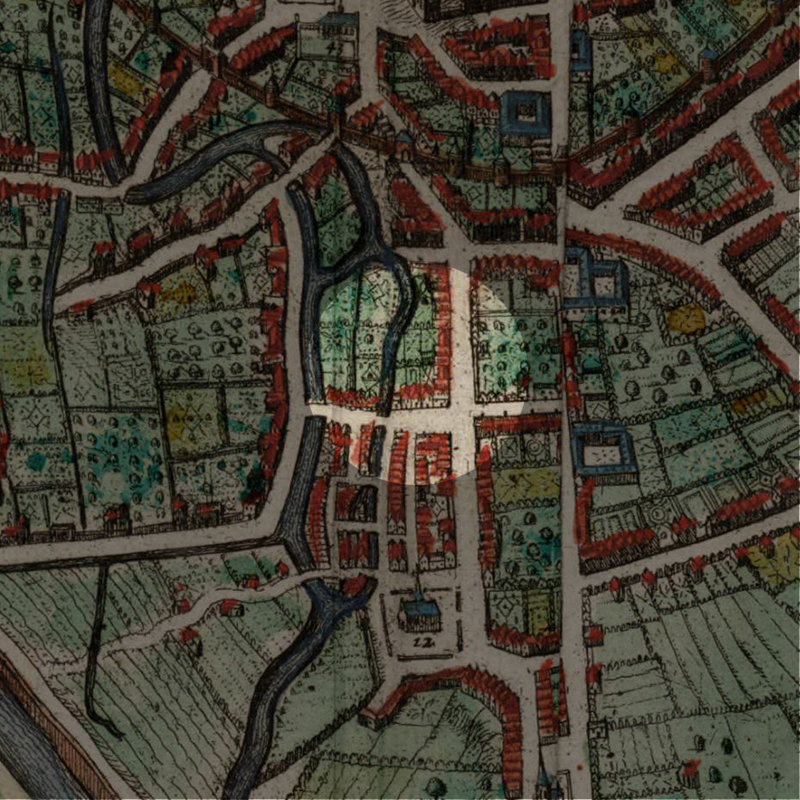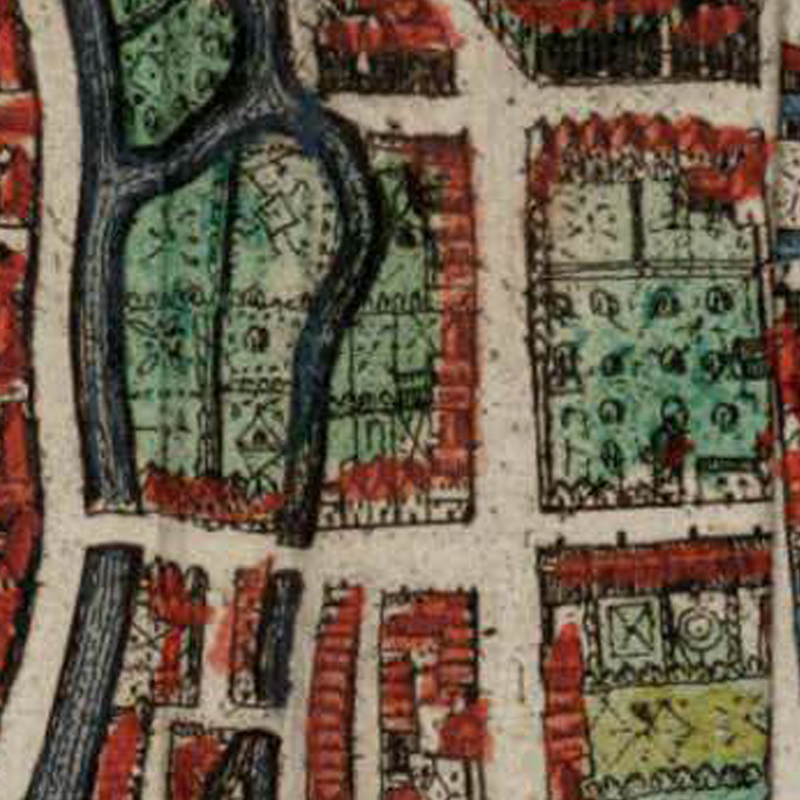ABOUT
Opposite the Groot Begijnhof, there used to be a community of nuns known as the Zwartzustersklooster van Nazareth (Convent of Black Sisters of Nazareth) under the Order of St Augustine. The convent compound was framed by the current-day Schapenstraat, Zwartzustersstraat and the River Dijle. Today, the remnants of the convent is a university student hostel of the KU Leuven called Residentie Zwartzusters.
Origin
1438: The Pious Girl from Liège
The story goes that a recent Jewish convert to Catholicism from the Prince-Bishopric of Liège by the name of Elisabeth Ymbrecht, bought a small house with straw roof in 1438 along the Molenweg (‘Mill Way’, today’s Zwartzustersstraat). There, with some companions, she founded a community of sisters to care for the sick, under the request of the Prince-Bishop of Liège, Lodewijk van Bourbon/Louis de Bourbon. In 1462, the Prince-Bishop granted these sisters the right to build a chapel and under the direction of the Cellebroeders, to embrace the Order of St Augustine.
Like their male counterparts the Cellebroeders, the Zwartzusters (Black Sisters) as they became to be called due to their entirely black habit, took care of the sick at their homes. Everyday, they made a tour of the city to seek them out, in exchange for a small contribution of food and money.
As the years went past and the community grew, the Zwartzusters bought a hospital where sick women could be cared for.
17th Century Expansion
In 1676-1679, the sisters decided to expand the Zwartzustersklooster. In 1680, the original medieval houses along the Zwartzustersstraat were torn down and replaced by a single monastic building. A new chapel was built in the corner between the Zwartzustersstraat and the Schapenstraat in 1687-1693, which still stands today.
The chapel was nothing fancy, as this was a community with little means. Above the entrance are the words that describe the order:
D.O.M.
HET GODSHUIS VAN NAZARETH,
GENOEMPT DIE SWERTE SUSTERS,
GEFUNDEERT IN DEN JARE 1462,
ONDER DEN REGEL VAN SINTE AUGUSTINUS,
VERNIEUWT A° 1680.
The French Occupation
With the invasion by the French revolutionaries in the 1780s when all religious orders in Leuven were banned, the Zwartzustersklooster survived not as a religious community, but as a healthcare provider.
With the creation of the Committee of Hospices in 1796, the French revolutionary administration decided to make the Zwartzustersklooster the care centre for women with mental illnesses. The Zwartzustersklooster became a female mental institute, but the sisters also continued to roam the city daily to care for the sick. After the expulsion of the French, the religious aspect of the order returned in the 19th century.
With Belgium’s independence in 1830, public healthcare was gradually brought under state control. A new hospital was constructed in the west wing of the Zwartzustersklooster and its east wing was further built upon. But in the 20th century, with a new psychiatric hospital being built by the state, the Zwartzustersklooster soon lost its place in the sector. By 1969, the Zwartzustersklooster was disbanded and the very last sister left the premises.
What's so special about this place?
There is nothing architecturally or historically significant about the Zwartzustersklooster. The glass and steel veranda along the inner facade is a pleasant 20th century addition.
Current situation
Since the end of the Zwartzustersklooster, the university KU Leuven became the owner of the Zwartzustersklooster. The university turned it into a student residence with 39 bedrooms and 3 common kitchens. The convent garden is a tranquil picnic spot for the students.
Sources:
https://inventaris.onroerenderfgoed.be/erfgoedobjecten/206830
https://nl.wikipedia.org/wiki/Zwartzustersklooster_(Leuven)
https://www.kuleuven.be/residenties/zzk
“Louvain dans le passé et dans le présent‘, Edward van Even, 1895 (Image)
HOW IT LOOKS LIKE TODAY
Click on the zoom icon to view the full size.

















